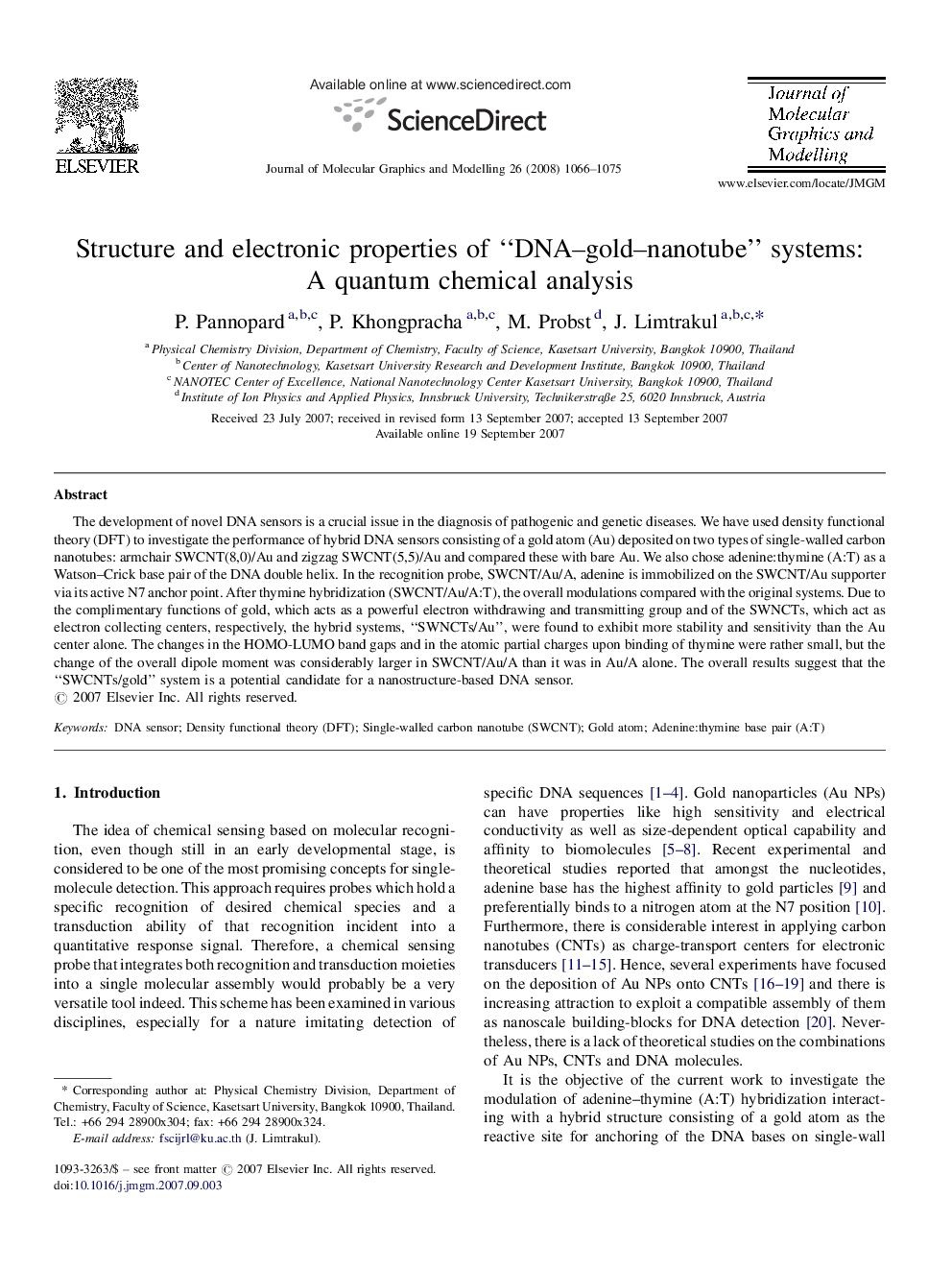| Article ID | Journal | Published Year | Pages | File Type |
|---|---|---|---|---|
| 444681 | Journal of Molecular Graphics and Modelling | 2008 | 10 Pages |
The development of novel DNA sensors is a crucial issue in the diagnosis of pathogenic and genetic diseases. We have used density functional theory (DFT) to investigate the performance of hybrid DNA sensors consisting of a gold atom (Au) deposited on two types of single-walled carbon nanotubes: armchair SWCNT(8,0)/Au and zigzag SWCNT(5,5)/Au and compared these with bare Au. We also chose adenine:thymine (A:T) as a Watson–Crick base pair of the DNA double helix. In the recognition probe, SWCNT/Au/A, adenine is immobilized on the SWCNT/Au supporter via its active N7 anchor point. After thymine hybridization (SWCNT/Au/A:T), the overall modulations compared with the original systems. Due to the complimentary functions of gold, which acts as a powerful electron withdrawing and transmitting group and of the SWNCTs, which act as electron collecting centers, respectively, the hybrid systems, “SWNCTs/Au”, were found to exhibit more stability and sensitivity than the Au center alone. The changes in the HOMO-LUMO band gaps and in the atomic partial charges upon binding of thymine were rather small, but the change of the overall dipole moment was considerably larger in SWCNT/Au/A than it was in Au/A alone. The overall results suggest that the “SWCNTs/gold” system is a potential candidate for a nanostructure-based DNA sensor.
